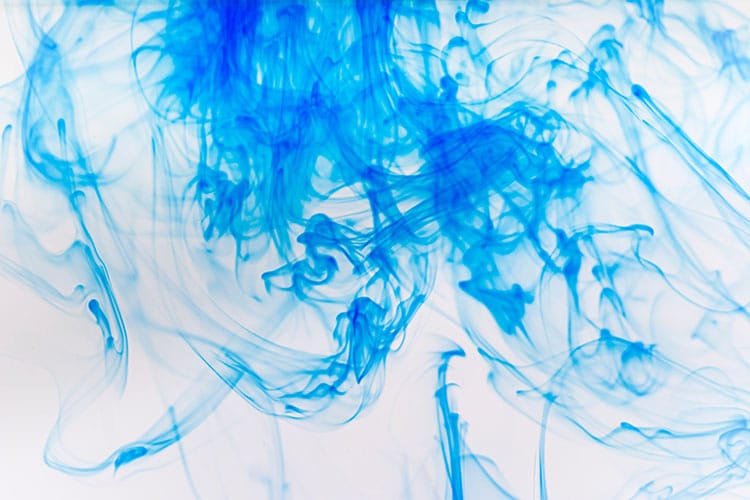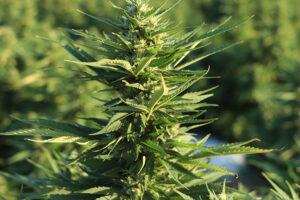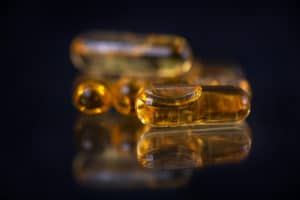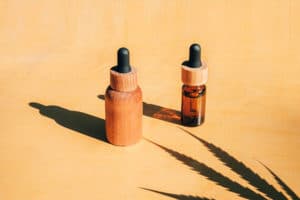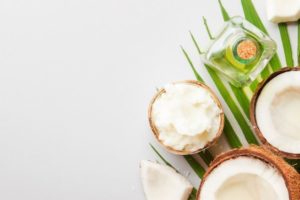Many people are turning to cannabidiol (CBD) products for their physical and mental health benefits. But what most of the biggest fans of CBD oil don’t know is for every dose of CBD they take, their body absorbs less than 10 percent of it. That means you are only getting a fraction of the benefits of the CBD oil products you use.
The reason is surprisingly simple – the human body cannot fully absorb CBD when ingested in its oil state. That includes many of the CBD capsules and other products you use.
When you think about it, it’s amazing that even though your body absorbs less than half of a CBD dose, you can still see significant results from the product.
But why settle for a fraction when you can have bigger and better results?
Fortunately, the CBD industry is still evolving and its scientists have found new ways to improve the absorption rate of CBD and heighten its potency. One particular solution that deserves your attention is Water Soluble CBD.
What is water soluble CBD?
Pour a spoonful of oil into a glass of water. No matter how well you shake, stir, blend, or swirl, the oil will always rise to the top and remain separate from the water.
Considering that the human body is 60 percent water, absorbing CBD oil into the bloodstream is a tricky affair. Because the body is unable to absorb all of the CBD oil it ingests, it leads to a significant decrease in the bioavailability of a CBD oil product.
Bioavailability is the amount of a substance that makes it into your bloodstream. Most CBD products available in today’s market have low bioavailability. If the bioavailability of a substance is low, it won’t have as much of an active effect on your system.
Research shows that the bioavailability of CBD oil, when consumed orally, is between 4 and 6 percent. That means over 90 percent of each dose of CBD you take ends up leaving your body as waste with no health benefits whatsoever.
The low bioavailability of CBD is due to its oil form, which is too dense for the human stomach to absorb. So, for every CBD oil product you buy, you only get 4 to 6 percent of your money’s worth out of it. That’s just wasteful and painful.
Converting CBD oil into a much easier-to-absorb solution changes this. Since the human body is 60 percent water, water soluble CBD is the most compatible and easy to absorb form of CBD.
Before water soluble CBD, the most effective way to consume CBD was as a tincture. Using tinctures requires holding the CBD oil for one to three minutes under your tongue. The mucous membranes of the mouth absorb it from there and then pass it into your bloodstream.
Unlike simply swallowing CBD, which requires it to go through the stomach and liver, after which only a fraction of it reaches your bloodstream, tinctures (also known as sublingual use) work much faster and let more of the dose get into the bloodstream.
Vaping is another potent way to consume CBD. But neither vaping nor tinctures beat the bioavailability of water soluble CBD.
It’s important to note that water soluble CBD does not imply that the product can dissolve in water. It simply means that the CBD molecules in water soluble CBD are far more compatible with water than those of CBD oil. That means your body will have an easier time breaking it down and absorbing it into your bloodstream, letting more of the many wonderful health benefits of CBD manifest.
How is water-soluble CBD produced?
When creating water soluble CBD, the goal is to convert CBD oil to a water-soluble powder. To accomplish this, the oil is broken into minuscule pieces. To keep the new tiny particles of oil in the desired form, non-toxic materials are used to encase it.
The final result is a grainy or powdery CBD hemp product that’s micro-encapsulated and water soluble. This product has higher bioavailability than regular CBD, even when you use it orally.
The advanced method of producing water soluble CBD requires the use of nanotechnology, which is the science of creating things at an atomic or molecular scale. Using advanced nanotechnology to create water soluble CBD involves using sound waves to break and create micro-sized particles out of CBD clusters. It’s highly effective and currently the preferred method in the industry.
With nanotechnology, you can break down CBD into droplets that are 10 to 100 nanometers in diameter. As we said earlier, the body struggles to absorb CBD oil because of its molecular size. By breaking it down with nanotechnology, it becomes much easier to absorb into the bloodstream.
The smaller the droplet, the easier it will be to absorb. That’s because smaller particles are more compatible with water since they can easily mix with water molecules.
Types of Water Soluble CBD
While nanotechnology may be the most effective way to make CBD oil more water-friendly, it’s not the only available process. Each available process creates a different type of water soluble CBD that has its own unique features.
Let’s take a look at some of the different types and what makes each one different.
Nanoemulsions
Nanoemulsion is the result of nanotechnology. For now, it’s the most effective method for creating water-soluble CBD oil, resulting in particles that are 10 to 100 nanometers in size.
Aside from being able to create the tiniest CBD droplets, the process also requires fewer surfactants than other methods. Even better, the surfactants used in the process are all-natural, minimizing the risk of potential health hazards.
Surfactants are used to coat the tiny particles of CBD oil to ensure it maintains its new form. The result is a translucent solution that you can add to beverages with no worries about it ruining the texture or appearance of the beverage.
Furthermore, nanoemulsion has a higher level of bioavailability, ensuring that you get more from each dose of water soluble CBD.
Microemulsions
Microemulsions also break down CBD oil into smaller particles, but not as effectively as nanoemulsions. Unlike nanoemulsions, which give a finished product that’s no more than 100 nanometers in size, microemulsions are 100 to 5000 nanometers in size.
That’s still small, but like we said, the smaller the better. Also, the larger particle size requires higher amounts of surfactants. While surfactants are generally safe, consuming them in large quantities can have side effects. For this reason, only a few CBD companies sell microemulsions.
Liposomes
Liposomes are even larger than microemulsions with a range of 50 to 5000 nanometers. They have multiple layers with a water soluble layer on the inside and a water-insoluble layer on the outside. The CBD itself lies in the outer layer.
More companies use liposomes than microemulsions. But because its process is more expensive and resource-intensive, nanoemulsions are still the preferred process. Plus, like microemulsions, liposomes have high surfactant levels.
What compounds are in water soluble CBD?
There are over a hundred known compounds in the marijuana plant that give it its potency. Tetrahydrocannabinol (THC) and Cannabinol (CBN) are among the most popular of these compounds.
THC is what produces psychoactive effects when you use cannabis, while CBN has no psychoactive effects but many health benefits, like antitumor, anti-inflammatory, and analgesic effects.
High-quality water soluble CBD can contain more CBN than THC, or no THC, making it ideal for achieving various health goals. When there’s no THC in a CBD product, you can use it without worries of getting high or red-flagged in a drug test.
Less popular but equally beneficial compounds in water soluble CBD products are Cannabigerol (CBG) and Cannabichromene (CBC). Like CBN, CBG is a non-psychoactive cannabinoid that has been shown in several studies to have health benefits. CBC is a phytocannabinoid that produces analgesic and anti-inflammatory effects, similar to CBN.
The Benefits of Water Soluble CBD
If you’re still on the fence about trying water soluble CBD, here are some good reasons to give it a try:
- Increased bioavailability
A small but significant portion of people who use CBD experience no effects. If you’re one of them, water soluble might be the solution. (No pun intended.)
With the increased bioavailability of water soluble CBD, your body will be able to absorb more of the compounds in the solution. The more compounds your body can absorb, the higher your chances of experiencing the desired effects.
- Versatile use
Due to its soluble nature and the fact that it has no smell or taste, there are several ways you can harness the benefits of water soluble CBD. Unlike CBD oil that limits how you can consume it, you can add the water soluble variation to your drinks and food.
Adding it to your coffee, smoothie, shakes, and more is a convenient way to get the benefits of CBD without ruining the flavor and enjoyment of your favorite beverages.
- Better value
Due to its high bioavailability, you’ll get more bang for your buck with the water soluble variation of CBD. With the high bioavailability, smaller doses of CBD will be enough to get you the effects you want, which means your supply will last longer and you can spend less.
- Shorter onset time and faster results
While vaping and sublingual use of CBD deliver faster effects than ingesting it, using a water soluble variation works even faster. That’s due to the higher bioavailability of water-soluble CBD and its compatibility with the human body, which is 60 percent water.
The downside of water-soluble CBD
If you’d rather ingest your CBD, you are better off going with water soluble CBD. On the downside, the health effects of the surfactant and the other agents used to coat and bond the CBD compound are still unknown.
And considering that each water soluble CBD producer has a unique mixture for creating their product, keeping track of what is used and what is safe can prove to be tricky.
Is water soluble CBD necessary?
Obviously, there are lots of things to love about water soluble CBD, especially how unlike CBD oil, it’s able to bypass the First Pass Effect.
The first pass effect of metabolism refers to the gradual reduction of an ingested compound as it passes through your system, leaving significantly less of the compound by the time it reaches your bloodstream.
The more bioavailability a compound has, the lower the first pass effect will be. Vaping, using a CBD tincture, or topical use allows you to get CBD oil’s compounds into your bloodstream faster by bypassing the first-pass effect.
But not everyone wants to vape, especially with recent lung disease health concerns. And it’s not always convenient to hold a tincture under your tongue to get your CBD fix.
Things move slower when you simply swallow CBD oil, but with water soluble CBD, all of that changes, making this variation of CBD a possible game-changer for consumers and the CBD industry.
Conclusion
For now, how popular water soluble CBD will be among consumers remains to be seen. But since vaping, oral use, and tinctures are hits, there’s no reason why water soluble CBD won’t also be. After all, it’s far more convenient and precise than the other methods of CBD use.
You can easily spray the desired dose directly into your mouth or add it to your food and drink and know that your body will get more of the dose than any other method can deliver. Plus, there’s the faster delivery, which means you will experience the effects of using a water-friendly CBD in less time than when using other CBD variations.
You also get to save money since you’ll require fewer doses to get the desired effect and will need to restock less often. With these obvious benefits, there really is no reason why water soluble CBD won’t grab the attention of consumers who are looking for a better way to enjoy CBD and unlock its health benefits.
FAQs About Water Soluble CBD Oil
Question: What is water-soluble CBD?
Answer: Water-soluble CBD is the most compatible and easy to absorb form of CBD. Water-soluble CBD is the most compatible and easy to absorb form of CBD.
Question: How to produce a water-soluble CBD?
Answer: CBD oil is broken into minuscule pieces. To keep the new tiny particles of oil in the desired form, non-toxic materials are used to encase it. The final result is a grainy or powdery CBD hemp product that’s micro-encapsulated and water-soluble.
Question: What are the types of water-soluble CBD?
Answer: Nanoemulsion, Microemulsion, and Liposomes are three of the most common types of water-soluble CBD.
Question: What are the compounds found in water-soluble CBD?
Answer: High-quality water-soluble CBD can contain more CBN than THC, or no THC, making it ideal for achieving various health goals. When there’s no THC in a CBD product, you can use it without worries of getting high or red-flagged in a drug test.
Question: What are the benefits of using water-soluble CBD?
Answer: The most common benefits of water-soluble CBD are increased bioavailability, versatile use, better value, shorter onset time and faster results.
Question: Is there a downside in using water-soluble CBD?
Answer: As of now, there is still no proven downside in using soluble CBD, but the health effects of the surfactant and the other agents used to coat and bond the CBD compound are still unknown.
Question: Does water-soluble CBD have THC?
Answer: High-quality water-soluble CBD can contain more CBN than THC, or no THC, making it ideal for achieving various health goals.
